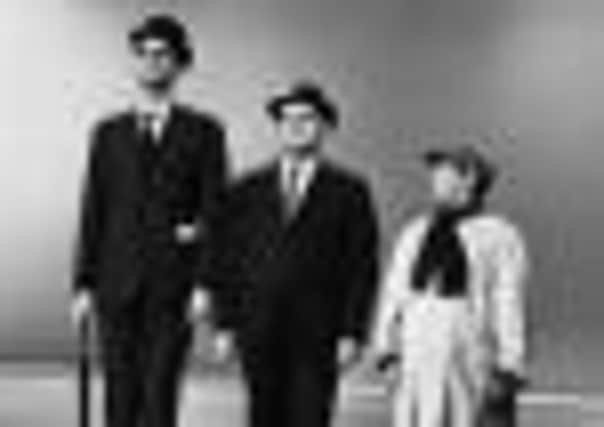British class system ‘fragmented’, says study


Researchers found the established model of an upper class, middle class and working class has “fragmented” and there are now seven classes ranging from the “elite” to the “precariat”.
The UK’s “elite” – just 6 per cent of the population – have savings of more than £140,000, extensive social contacts and were educated at top universities, according to the BBC’s online Great British Class Survey. More than 160,000 respondents took part in the survey, the largest of its kind in the UK.
Advertisement
Hide AdAdvertisement
Hide AdRepresenting 15 per cent of the population, the “precariat” earn just £8,000 after tax and have average savings of £800, with fewer than one in 30 gaining a university education.
Professor Mike Savage, of the London School of Economics and Political Science (LSE), carried out the research with Professor Fiona Devine, of the University of Manchester, with the help of BBC Lab UK.
Prof Savage said: “It is striking that we have been able to discern a distinctive elite, whose sheer economic advantage sets it apart from other classes.
“At the opposite extreme, we have discerned the existence of a sizeable group – 15 per cent of the population – which is marked by the lack of any significant amount of economic, cultural or social capital.
“The recognition of the existence of this group, along with the elite, is a powerful reminder that our conventional approaches to class have hindered our recognition of these two extremes, which occupy a very distinctive place in British society.”
Researchers found the “traditional working class” has fallen to just 14 per cent of the total population, and “is fading from contemporary importance”.
At one in four of the population, the “established middle class” is the largest group, with household income of £47,000 and “highbrow” tastes.
Beneath them is the “technical middle class”, largely made up of researchers, scientists and those in technical professions.
Advertisement
Hide AdAdvertisement
Hide AdThe average age for this group is 52, with members tending to live in suburban areas, often in the south-east of England.
Below the technical middle class and above the traditional working class is the group known as “new affluent workers”. This group has an average age of 44 and is made up of those who are economically secure without being well-off.
The “emergent service workers” are the final group and the youngest, with a mean age of 34 and high proportions of ethnic minorities.
Prof Devine said: “It’s what’s in the middle which is really interesting and exciting. There’s a much more fuzzy area between the traditional working class and traditional middle class.
“There’s the emergent workers and the new affluent workers, who are different groups of people who won’t necessarily see themselves as working or middle class.”
The researchers asked questions about people’s leisure interests, musical tastes, use of the media and food preferences to help build a picture of Britain’s cultural consumption.
They also used a “position generator” developed by the American sociologist Nan Lin in 2001 to measure the range of people’s social ties, asking participants whether they knew anyone in 37 different occupations.
Information was also gathered on household income, household savings and the value of participants’ homes. The combined information was used to make a “score” which represented each participant’s economic capital.
The findings were presented at a conference of the British Sociological Association yesterday, and will be published in this month’s Sociology Journal.